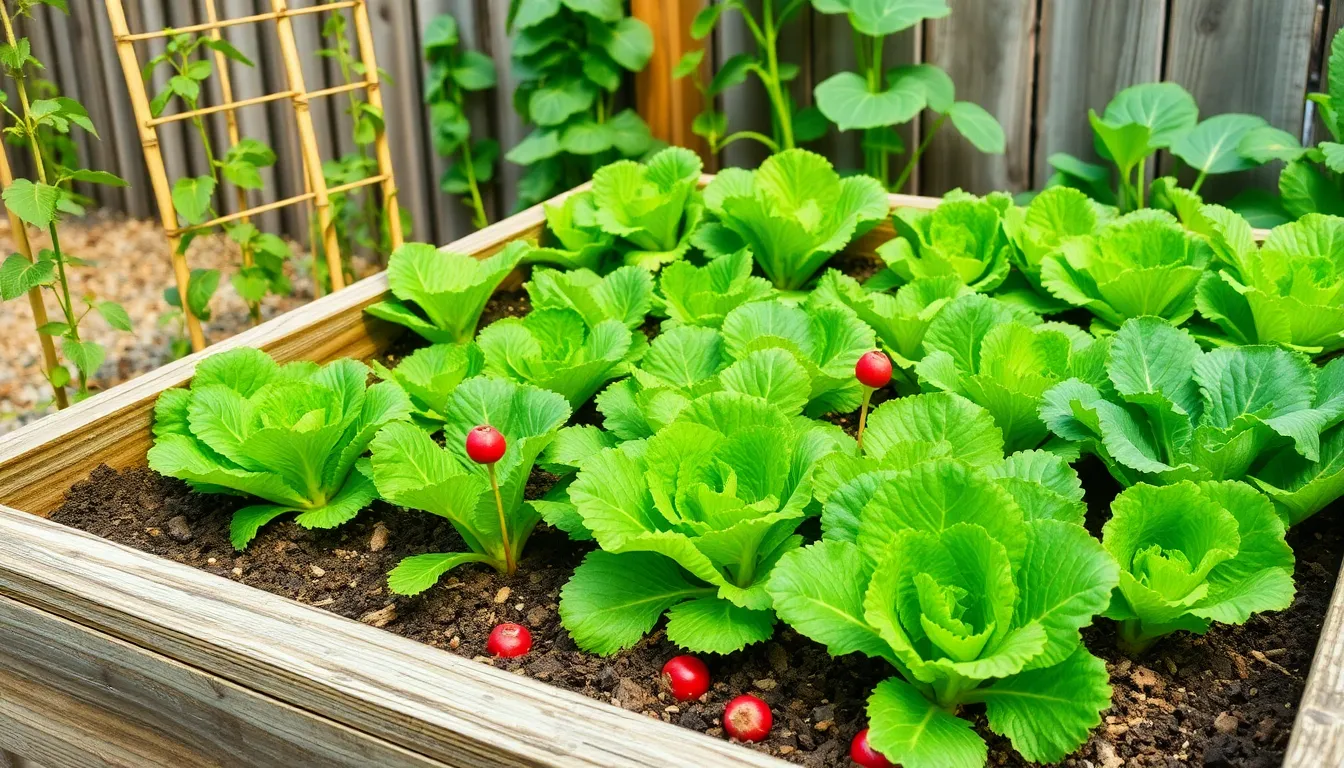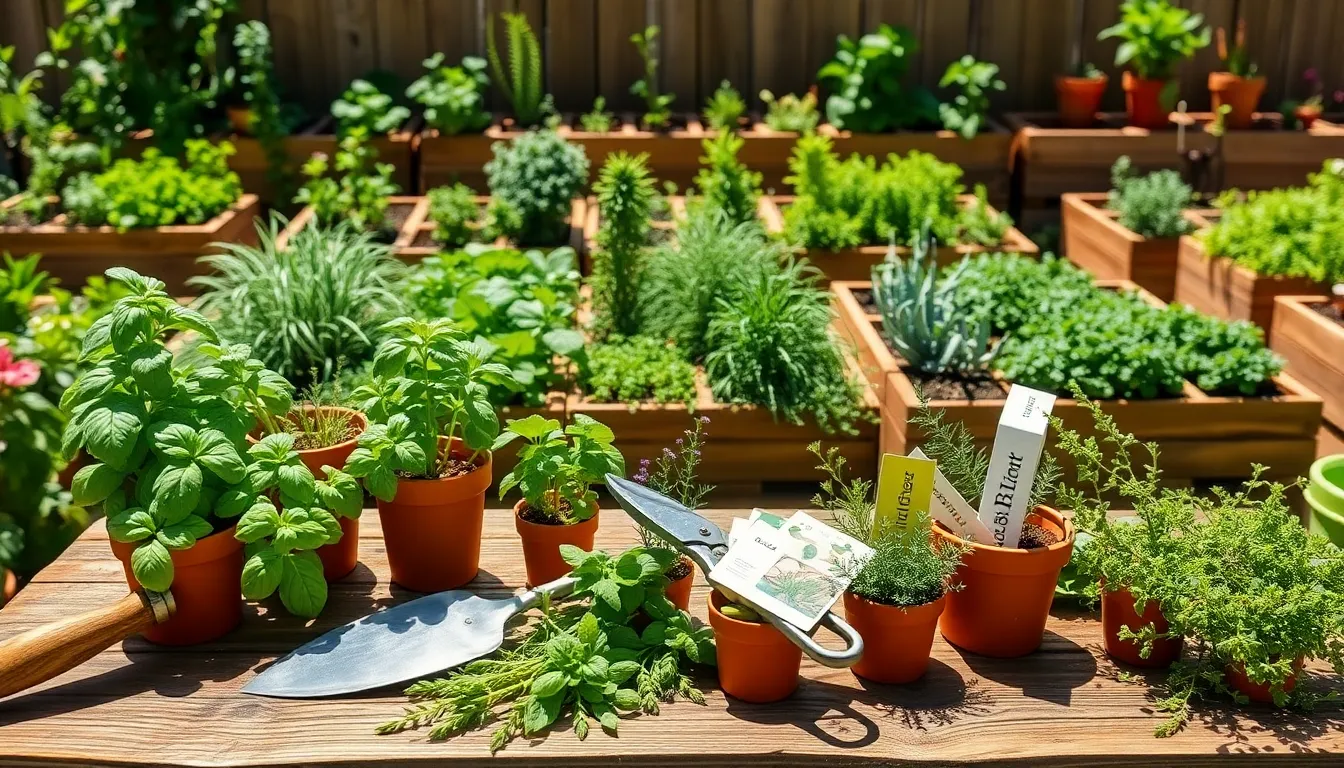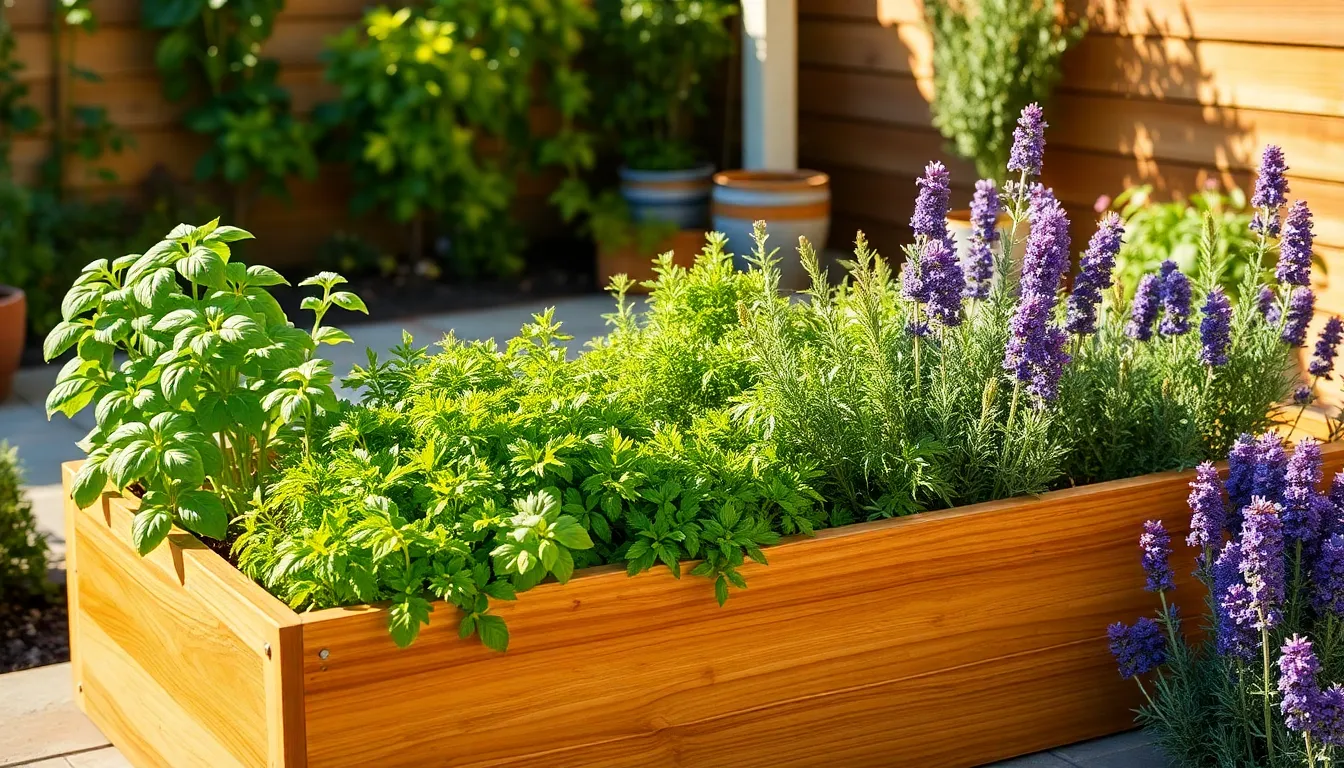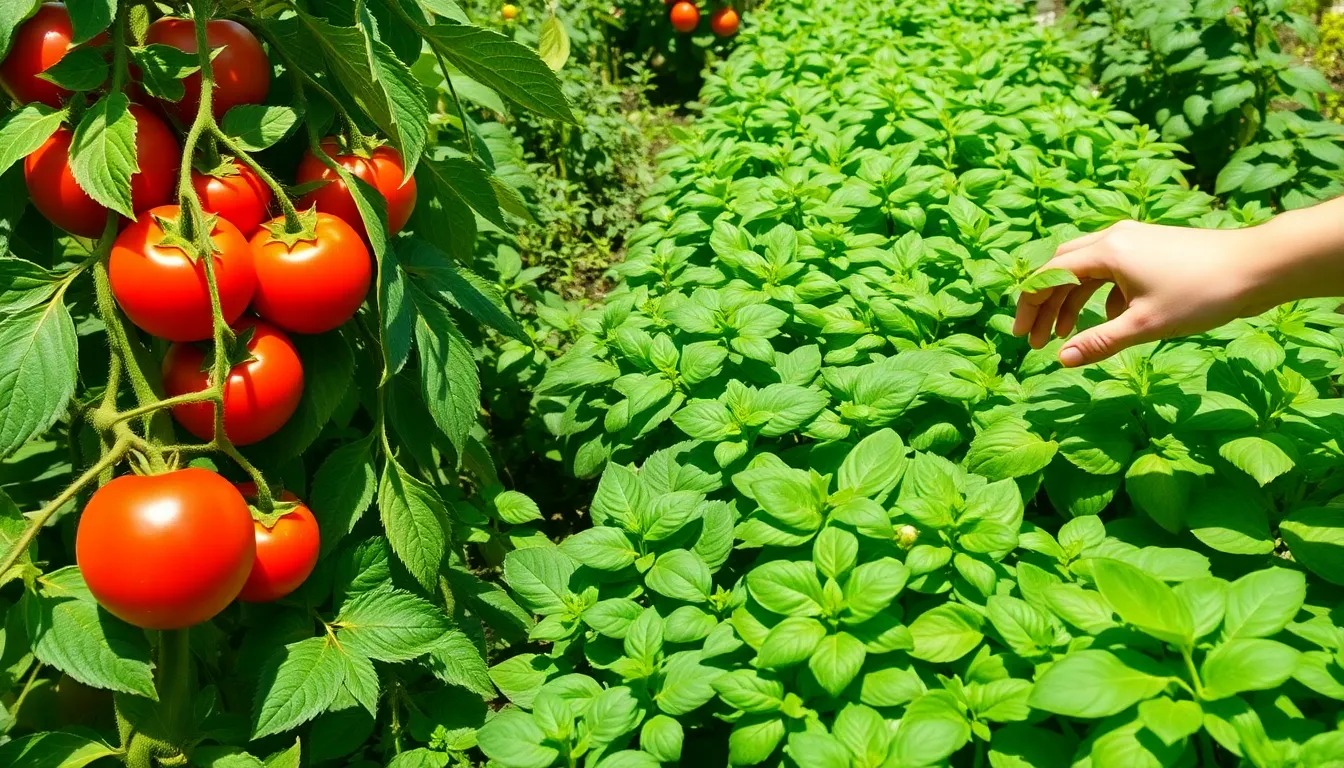Gardening is a journey that begins with a single seed, and for many, that journey is both a source of joy and a gateway to healthier living. Whether you’re a seasoned horticulturist or a curious beginner, growing your own vegetables can transform your relationship with the food on your plate and the soil beneath your feet. This article is designed to guide everyone through the exciting world of vegetable gardening, highlighting varieties that promise success for novices and seasoned gardeners alike. From the vibrant hues of cherry tomatoes to the crisp crunch of radishes, you’ll discover how easy it is to cultivate a bountiful harvest.
For those just starting out, the prospect of growing your own food might feel overwhelming, but worry not—this guide is here to simplify the process. You’ll learn about hardy vegetables that thrive with minimal fuss, perfect for building confidence and skills. Experienced gardeners, too, will find value in revisiting these resilient favorites, perhaps discovering new techniques or varieties to enhance their existing plots. Together, we’ll explore practical tips, from soil preparation to pest management, ensuring your garden flourishes with ease.
Each step of the way, you’ll find yourself supported by a community of fellow growers who share your enthusiasm and curiosity. With patience and care, even the most humble garden can become a source of pride and nourishment. Dive into this adventure with us, and unlock the secrets to a thriving vegetable garden that not only feeds your body but also nurtures your spirit. Whether your thumb is green or just beginning to tint, this journey promises to be as rewarding as it is educational.
Top Beginner-Friendly Vegetables
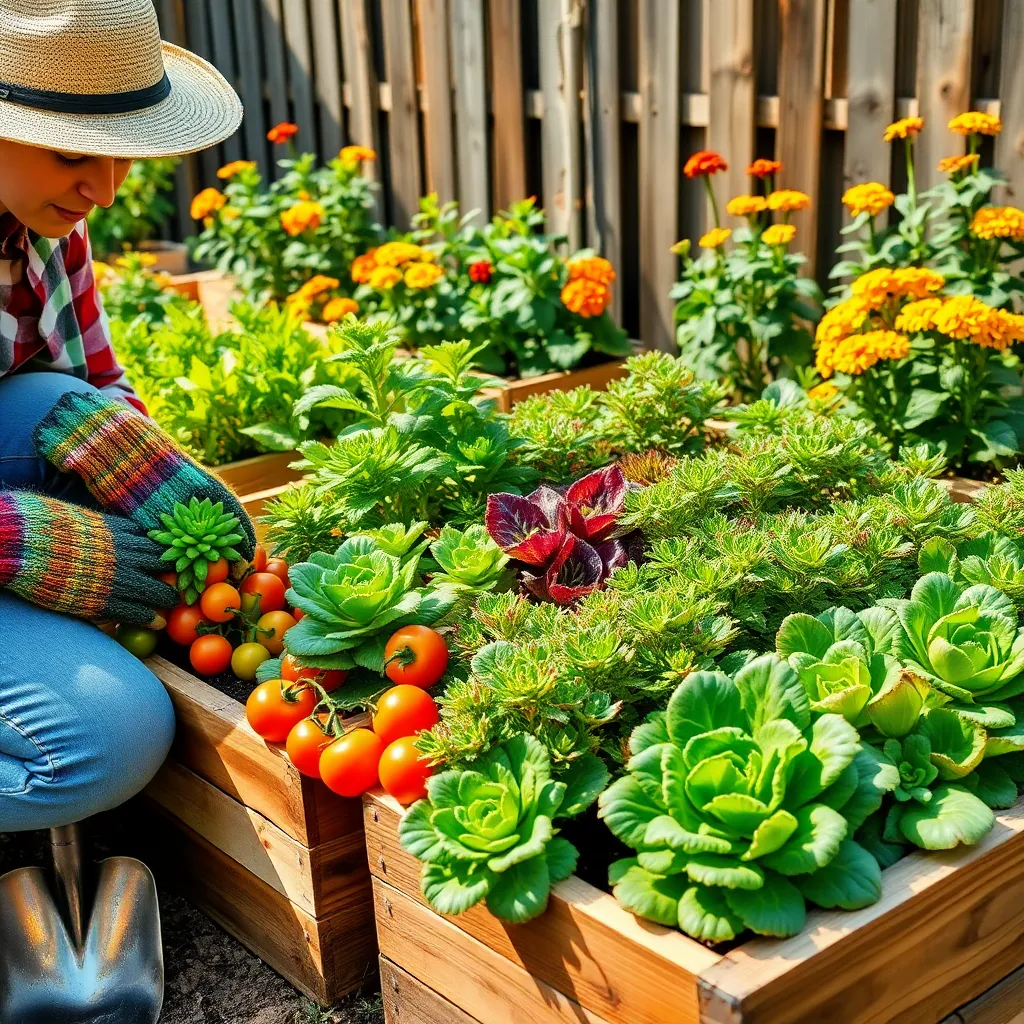
One of the top beginner-friendly vegetables to grow is lettuce, thanks to its rapid growth and minimal care requirements. Lettuce thrives in cooler temperatures, making it perfect for early spring or fall planting, and it can be grown in containers or directly in the ground.
For optimal growth, ensure that lettuce is planted in well-draining soil enriched with organic matter. Water consistently to keep the soil moist, but not waterlogged, and consider using a mulch to retain moisture and suppress weeds.
Another excellent choice for beginners is radishes, known for their quick maturation and ease of planting. Radishes can be sown directly into the soil as soon as the ground is workable in spring, and they will be ready to harvest in just about 4 weeks.
Radishes prefer a sunny location and loose, fertile soil with good drainage. To achieve the best results, thin seedlings to about an inch apart once they emerge, ensuring each plant has enough space to develop.
Zucchini is a fantastic vegetable for beginners due to its prolific nature and relatively simple growing requirements. Zucchini plants require full sun and well-draining soil rich in organic matter; they benefit from a regular watering schedule, especially during dry spells.
As zucchini plants can spread quickly, provide ample space by planting them 3 to 4 feet apart. For a more abundant harvest, regularly check for and pick mature zucchinis, which encourages the plant to continue producing.
Tomatoes are another popular choice for beginner gardeners, offering a rewarding experience with a bit of care. Choose a sunny spot for your tomato plants and use stakes or cages to support their growth as they can become quite tall and heavy with fruit.
To promote healthy plants and maximize yield, feed tomatoes with a balanced fertilizer every 4 to 6 weeks. Ensure consistent watering at the base of the plant, avoiding wetting the leaves to reduce the risk of disease.
Planting Tips for New Gardeners
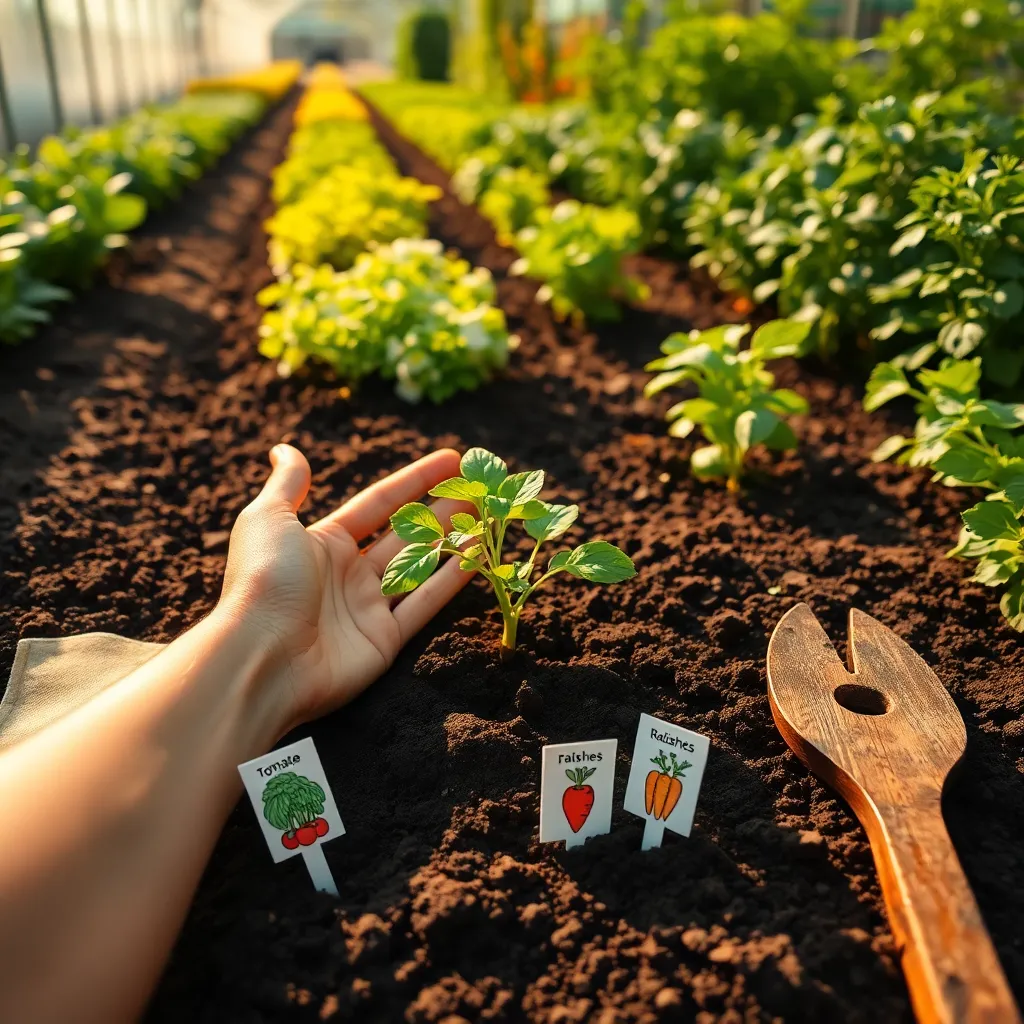
Starting a garden can feel overwhelming, but choosing the right location is crucial to your success. Aim for a spot that gets at least six hours of sunlight daily, as most vegetables thrive in sunny conditions.
When it comes to soil, the foundation of your garden, opt for a well-draining type to prevent waterlogging. Consider mixing in organic matter like compost or aged manure, which can greatly enhance soil fertility, giving your vegetables a healthy start.
Watering is essential, but too much or too little can be detrimental. Ideally, water your plants in the morning, ensuring the soil remains consistently moist but not soggy, which can lead to root rot.
For beginners, using raised beds or containers can simplify the process and offer more control over soil quality. Additionally, these methods can help with pest management and make it easier to reach your plants for maintenance and harvesting.
While patience is key, monitoring your plants regularly will help you spot issues early. Look for signs of pests or disease, and take action promptly—removing affected leaves or using natural remedies can often save the plant.
Simple Care Routines Explained
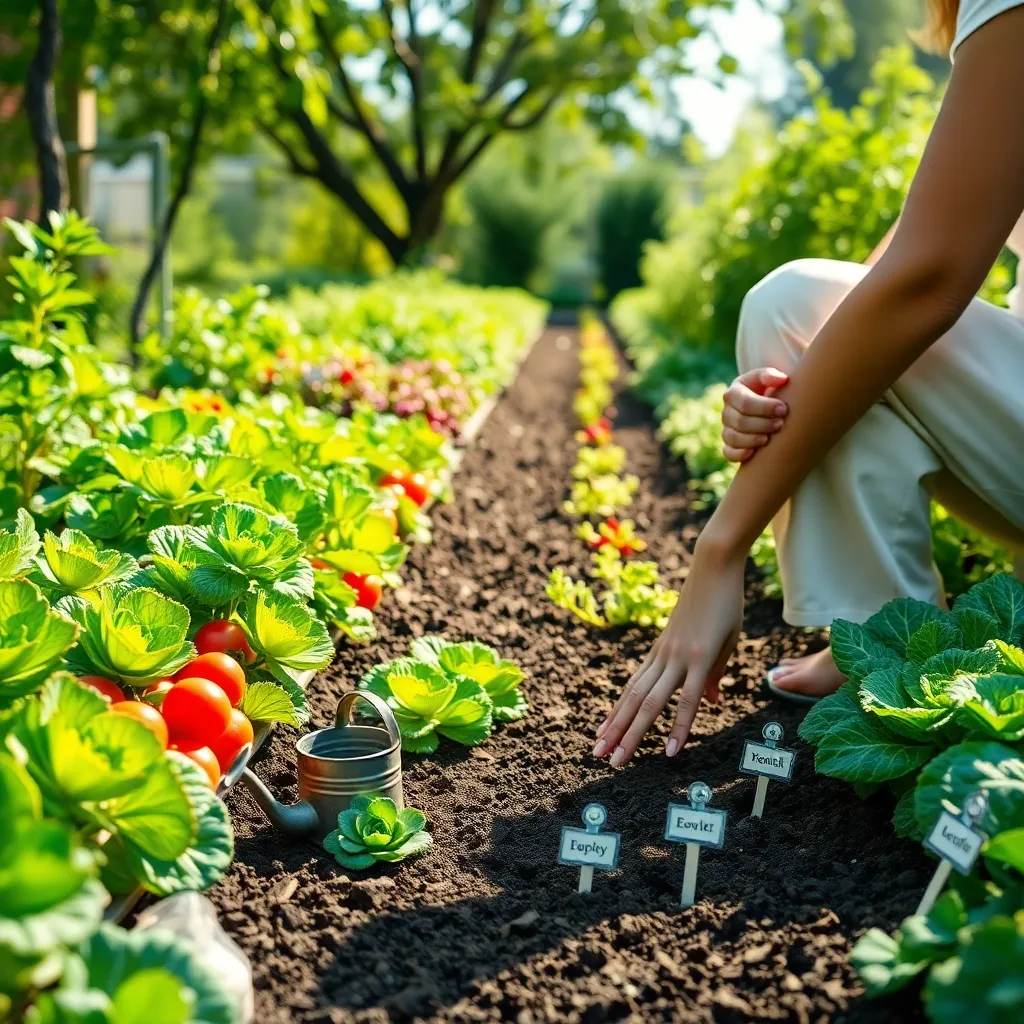
Gardening success often hinges on establishing a simple yet effective care routine. Begin by knowing the specific watering needs of your vegetables, as overwatering can be just as detrimental as underwatering. Most veggies prefer consistent moisture, so aim to water when the top inch of soil feels dry to the touch.
In addition to watering, regular feeding is crucial for plant health. Use a balanced organic fertilizer every few weeks during the growing season to support robust growth and abundant yields. Choosing fertilizers with a balanced N-P-K ratio helps ensure your plants receive the essential nutrients they need.
Mulching is another valuable practice that can enhance your garden’s productivity. Apply a layer of organic mulch, such as straw or shredded leaves, around your plants to retain soil moisture and suppress weeds. Mulch also helps regulate soil temperature, protecting roots from extreme heat or cold.
Monitor your plants regularly for signs of pests or diseases. Early detection is key, so inspect leaves and stems for any unusual spots or damage. If you spot an issue, consider using natural remedies, like neem oil or insecticidal soap, to manage the problem without harming beneficial insects.
Troubleshooting Common Growth Issues
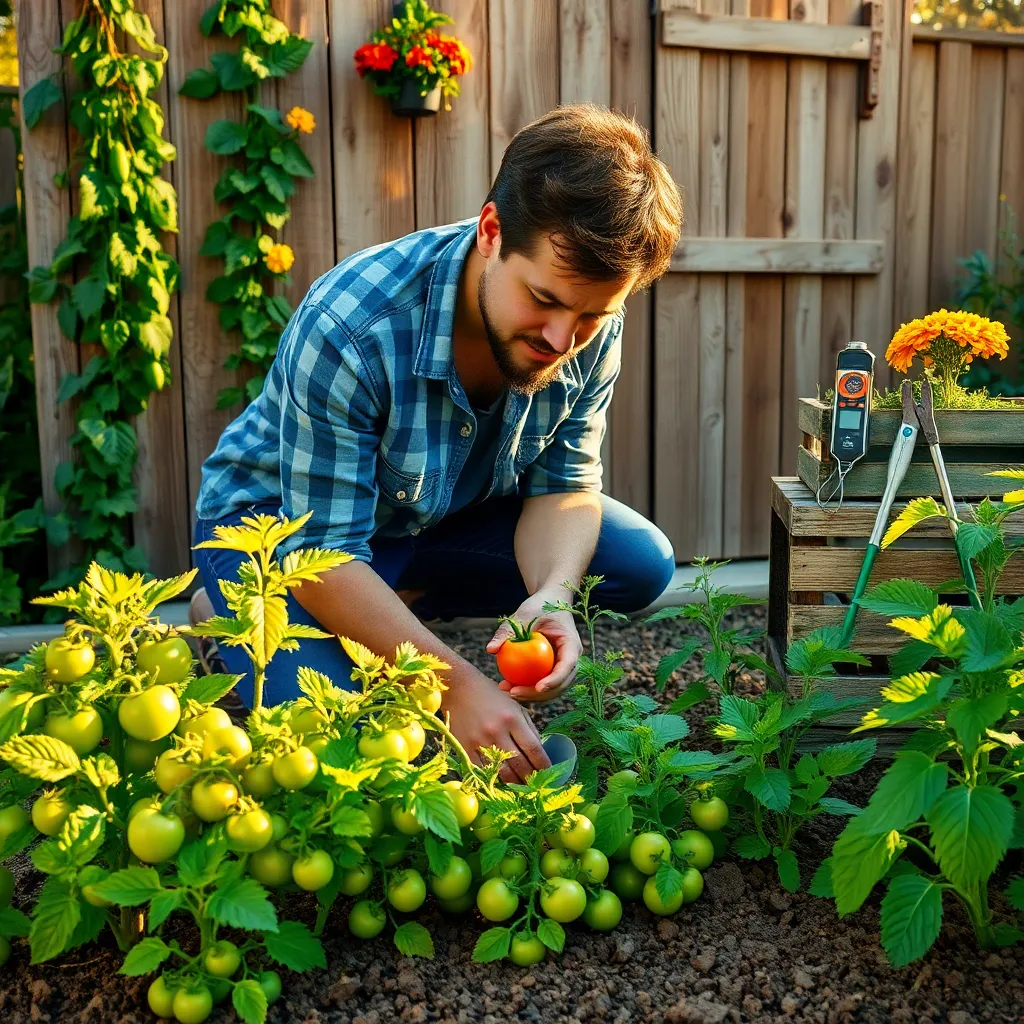
Experiencing stunted growth in your vegetable garden can be frustrating, but addressing the underlying issues can bring about a quick turnaround. Often, the problem lies in the soil quality; ensure your soil is rich in nutrients by adding organic compost or well-rotted manure.
It’s also important to maintain proper watering habits to avoid common growth issues. Vegetables generally require about one inch of water per week, but this can vary with weather conditions, so adjust your watering schedule accordingly to prevent root rot or dehydration.
Additionally, keep an eye out for pests that can hinder plant development. Employ natural pest control methods, such as introducing beneficial insects like ladybugs or using homemade sprays made from ingredients like garlic or neem oil to safeguard your plants.
For those ready to try advanced methods, consider crop rotation to prevent soil nutrient depletion and reduce disease risk. Rotate your crops yearly, planting different vegetable families in separate areas of your garden, which can also help in breaking pest life cycles.
Harvesting Your First Crops
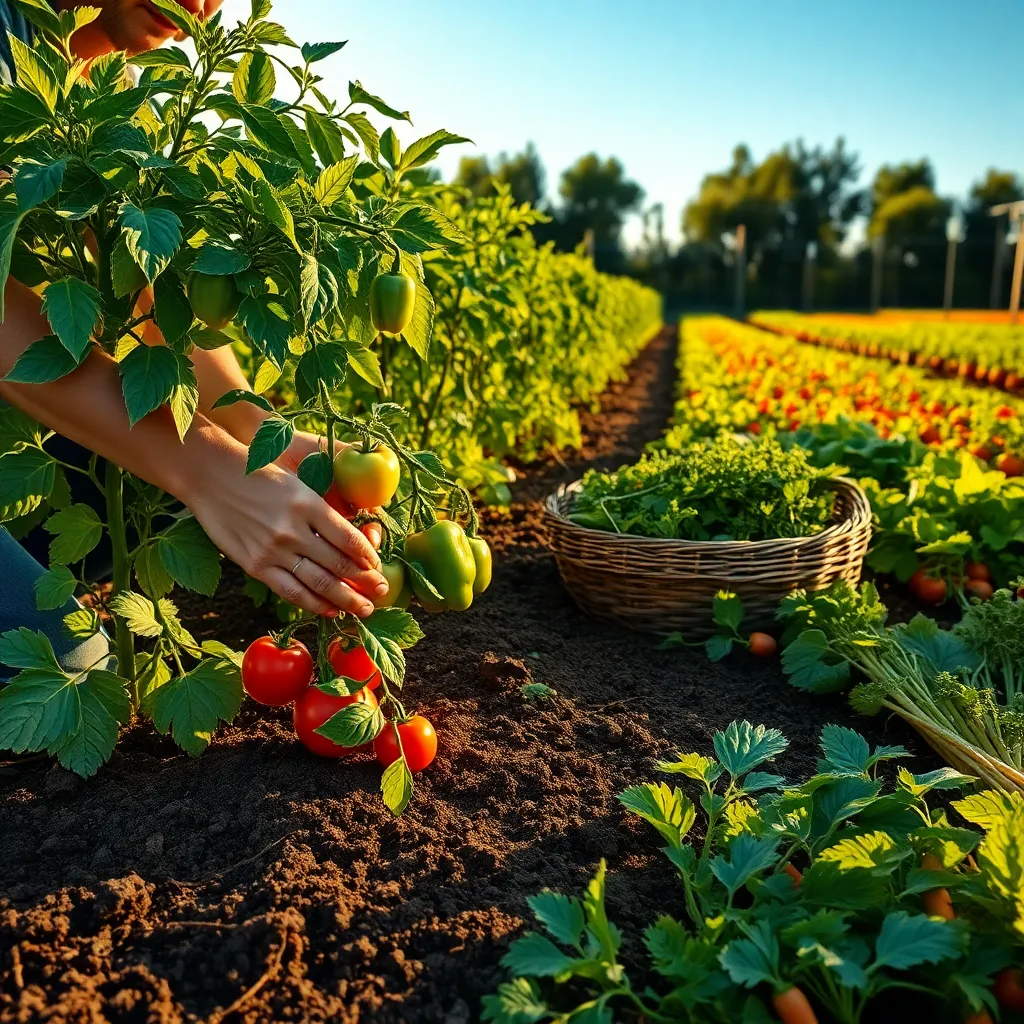
Once your plants have reached maturity, it’s time to enjoy the fruits of your labor by harvesting your first crops. Start by checking the specific growing timelines for each vegetable, as they vary significantly; for instance, radishes are ready in about 25 days, while carrots might take up to 70 days.
For the best flavor and nutrition, pick vegetables in the morning when temperatures are cooler. This is especially important for leafy greens like spinach and lettuce, which should be harvested before the heat of the day to prevent wilting.
Use clean, sharp scissors or garden shears to make precise cuts, minimizing damage to the plants. When harvesting herbs, such as basil or cilantro, trim the leaves just above a pair of leaves to encourage new growth and extend the plant’s productivity.
For root vegetables like carrots and beets, gently loosen the soil around the base before pulling them up to avoid breaking the roots. If you’re unsure about the readiness of your crop, a quick tug on one or two plants will help you assess their size and development.
After harvesting, wash your vegetables thoroughly to remove any dirt or pests that might be clinging to them. Proper storage is crucial; for instance, keep tomatoes at room temperature until fully ripe, then refrigerate to extend their shelf life.
Remember that regular harvesting can enhance your garden’s yield by encouraging plants to produce more. Keep an eye on your garden daily, as some vegetables, like zucchini, can grow rapidly and may become overripe quickly if not picked in time.
Conclusion: Growing Success with These Plants
As we wrap up our exploration of ‘Easy-to-Grow Vegetables for Beginners,’ remember that nurturing relationships parallels the art of gardening. First, we highlighted the importance of patience, illustrating how both love and plants flourish over time. Next, we emphasized communication, akin to understanding the needs of each seed. Then, adaptability came into play, showing how relationships, like gardens, thrive when we embrace change. We also discussed consistency, essential for providing the care and attention relationships require. Lastly, we explored the joy of sharing, reminding us that relationships, like harvests, are most rewarding when shared with others.
Now, take a moment to plant the seed of action: choose one relationship in your life to nurture today, whether it’s a heartfelt conversation or a simple gesture of kindness.
To keep these insights close at hand, bookmark this article as your ongoing guide to cultivating strong, healthy connections. Remember, the seeds you plant today will bloom into tomorrow’s beautiful relationships. Your journey to relationship success is just beginning—let’s grow together! 🌱✨

